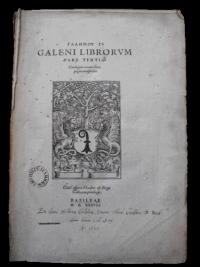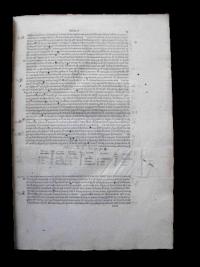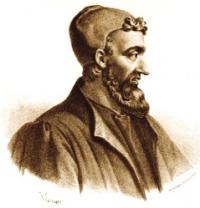Galen rediscovered —Goulston’s Basle edition
Published in Issue 3 (May/June 2012), News, Volume 20
Frontispiece of Galeni Librorum
The ancient doctor Galen of Pergamum (modern-day Bergama in Turkey) has left us much to ponder, not only because of his own huge literary output (about 140 of his treatises survive) but also because of his many references to other titles and his eclectic style of writing. At times he is very precise and detailed; at others he jumps from one point to another without any obvious connection. Often, when he is explaining something, another thought crosses his mind and he skips ahead, leaving out some steps which the reader has to fill in. On top of that, the author’s work has made an almost 2,000-year-long journey, most of the time before the invention of the letterpress.In Galen’s time (AD 129–199/217), and later in the Middle Ages, the texts were handwritten by scribes in different places under different circumstances and underwent changes and mistakes, conjectures and alterations, both intentionally and unintentionally, until they condensed into the early modern printed editions published, for example, in Venice (the Aldine) or in Basle (the Basileensis). The reconstruction and critical editing of these ancient medical texts is a difficult and time-consuming work, since all the versions containing the texts (which could be papyri, manuscripts, excerpts, translations, different editions and so on) have to be brought together, collated and their relationship established, so that (in the best case) the text as Galen wrote it is reconstructed.

a page with Theodore Goulston’s pinned-on annotations. (Marsh’s Library)
Since the foundation of the Corpus Medicorum Graecorum by Hermann Diels in Berlin in 1907, many of the Greek medical texts were edited, but many remained unedited when the project ended in 2010. Every end is also a beginning, however, so in 2011 a new long-term project—‘Galen of Pergamum: the Transmission, Interpretation and Completion of Ancient Medicine’, located at the Berlin-Brandenburg Academy of Sciences and Humanities—was established to complete the work but now focused solely on the Galen texts.As an editor of Galenic texts I’m grateful for any help I can get, and one person providing it is Theodore Goulston (1572/4–1632), a famous English physician with a special interest in Galen. Thus, for editors such as I, all roads lead to Dublin’s Marsh’s Library, where one can consult Goulston’s own copy of the Basle edition of the Galenic texts, as I had the opportunity to do last summer. In this copy, Goulston left many notes and comments from different sources. Some seem to result from the consultation of other manuscripts, some from his own head and others from sources unknown. Imagine my disappointment, then, when I discovered that volume III, containing the very text I was then editing, De locis affectis (‘On the affected parts’), was missing, and had been for more than a century. Imagine my even greater joy when I was informed several months later (March 2012) that the lost volume had turned up again and will give the world a better insight into Galen himself and into Theodore Goulston’s engagement with him.

Aelius Galenus or Claudius Galenus (September AD 129–199/217), better known as Galen of Pergamum (modern-day Bergama, Turkey), was a prominent Roman (of Greek ethnicity) physician, surgeon and philosopher. Arguably the most accomplished of all medical researchers of antiquity, Galen contributed greatly to the understanding of numerous scientific disciplines, including anatomy, physiology, pathology, pharmacology and neurology, as well as philosophy and logic. (Lithograph by Pierre Roche Vigneron c. 1865)
A few examples of these annotations that I have had the chance to see so far are quite promising. Especially in the case of the Galenic text De locis affectis, Goulston’s annotations seem to reveal some details and might throw more light on his sources. As Vivian Nutton pointed out in an article in 1992, some of Goulston’s annotations go back to the study of the Basle edition of John Caius (1510–73), which can nowadays only be found in the library in Eton. Nevertheless, some others, especially those to the mysterious codex Adelphi, have still to be sourced. For example, the first variant worth mentioning that Goulston wrote down is found, besides there, only in the Aldine edition of Jena that belonged to Janus Cornarius (1500–58). Though there does not have to be a direct connection, there might as well be. Owing to the newly discovered (returned!) material new connections will be drawn, new discussion will arise and some editors of Galenic texts will get some help or new ideas.So in the end the rediscovery of the third volume of the Galenic Basle edition annotated by Goulston, containing a few of Galen’s most interesting works, is a piece of luck for scholars dealing with his texts all over the world and will most certainly provide some thought-provoking impulses for their work. Moreover, it may help us to understand more about the man Theodore Goulston, his work and the sources of his annotation, though this work is yet to be done. Information about the new Galen project can be found on http://www.galen.bbaw.de. HI
Florian Gärtner works for the ‘Galen of Pergamum: the Transmission, Interpretation and Completion of Ancient Medicine’ project at the Berlin-Brandenburg Academy of Sciences and Humanities.
















